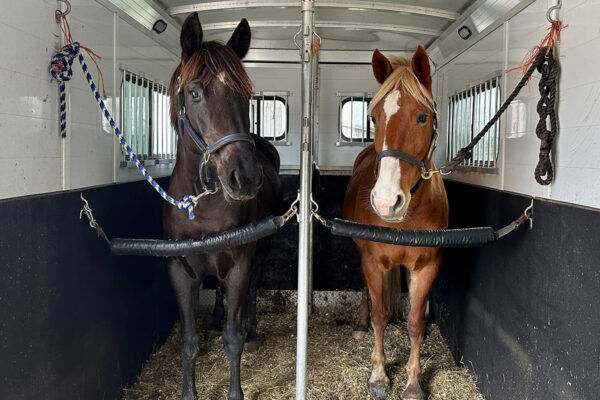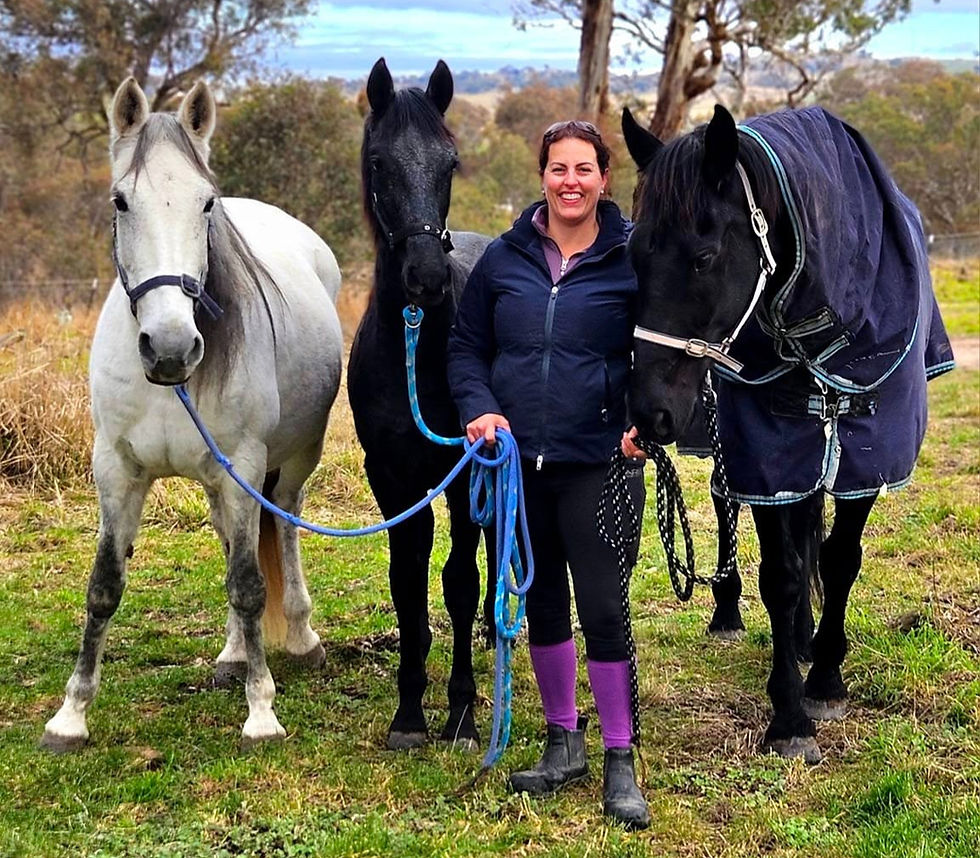Solving Horse Floating Problems: Why It All Comes Down to Leading Basics
- Loz
- Aug 15
- 4 min read
Updated: Aug 18

The Link Between Leading Skills and Loading Your Horse Safely
Horse floating can be a stressful experience for both horse and handler. Many of the issues encountered when loading and unloading a horse from a float don’t actually begin at the ramp—they stem from fundamental problems with leading. Understanding and perfecting the basics of leading not only makes day-to-day handling easier, but also sets you and your horse up for safe, stress-free float loading.
Why Leading Skills Matter for Floating
Floating is, at its core, an extension of leading. If a horse doesn’t respond calmly and consistently to clear cues on the ground, it’s unrealistic to expect them to walk confidently up a ramp and into a float. The float presents new challenges—confined spaces, odd footing, and tight turns—that all demand trust and solid groundwork.
The Fundamentals of Good Leading
If you need to master or refresh your leading fundamentals, please take a read of my previous blog on "Mastering the Leading Fundamentals: A Step-by-Step Guide for Safe, Effective Horse Handling".
Creating a Safe Space for the Horse in the Float
Ensuring that a horse feels safe and secure while in a float is crucial for its well-being and comfort during transport. Here are some approaches to create a safe environment:
1. Familiarisation
Introduce the horse to the float gradually, allowing it to explore the space without pressure.
Use positive reinforcement, such as treats or praise, when the horse shows curiosity or enters the float.
2. Comfortable Environment
Ensure the float is clean and free from debris that could cause injury.
Provide non-slip flooring to prevent the horse from slipping during transport.
Consider adding bedding such as straw or rubber mats for added comfort.
3. Secure Loading and Unloading
Use a calm and patient approach when loading and unloading the horse to minimize stress.
Employ a loading ramp if available, as it can make the entry and exit easier for the horse.
4. Proper Restraint
Use appropriate halters and lead ropes that allow for some movement without risking injury.
Avoid tying the horse too tightly, ensuring it has enough room to balance itself.
My number 1 tip here is use these velcro safety release trailer tie-ups
The reason I use these, and only these, is that if a horse does pull back the velcro gives way and no bungee/reaction to snap them in the face! 100% game changer!
If you do have a horse that pulls back, then you potentially should re-check in with leading fundamentals.
5. Ventilation and Temperature Control
Ensure the float is well-ventilated to prevent overheating and provide fresh air.
Monitor the temperature inside the float and make adjustments as necessary, such as using fans or opening windows. It is better for the horse to be too cool than too warm!
6. Regular Breaks
Keep training sessions fairly short, no more than 20-30mins. Even better if it is less.
Going on long journey's? Plan for regular breaks, to allow the horse to have a break - stretch and relieve itself.
During breaks, provide water and a chance to walk around if safe to do so.
7. Calm Environment
Keep noise levels low and avoid sudden movements that could startle the horse.
Check in on how you are handling the vehicle and float, can you feel or hear your horse shift? If so, you are going too quickly!
Give yourself ample breaking space - better to be slow and steady than dead fast!
By implementing these strategies, you can help ensure that the float is a safe and comfortable space for the horse, reducing anxiety and promoting a positive travel experience.
8. Lunging/Make Em Move prior to travelling? STOP!
If you are lunging your horse to make it tired before getting on, STOP! Travelling is taxing enough on the horse! (Didn't know this, do a quick Google...)
Or the other thing I have seen is make them move when away from the float entrance and stop when they are near the ramp. You are reinforcing the anxiety they feel being near or wanting to go on a float.
If you are needing to resort to "heavier" methods, you need to check yourself and take a step back. Your horse needs calm, clear guidance and you need to check in on your basic leading skills.
9. End on a Good note
You don't want to spend hours in a single float loading session.
If the horse is really anxious, focus on one small progression and "quit while you are ahead" and the horse is still calm and able to process the new positive experience
An example could be getting the horse to sniff the ramp and stay calm, walk away and repeat 2 more times. Quit there.
Another example could be getting the horse to simply put one front hoof on the ramp, staying calm and quitting there also.
Not ready for that even? Maybe just park the open float nearby and set up some hay/feed at the smallest cusp of the horse showing any signs of anxiety, to associate positive things with loading. (You can gradually reduce how far away you are from the float with consistency here.)
Simple, small and short chunks of positive sessions will work wonders with your horse.
Don't start the session thinking that you must get the horse on. Start with simple achievable goals in these sessions. Remember it is about the horse being calm and having a positive association with the float.
Conclusion
Improving your horse’s leading skills is one of the best investments you can make for safer, more enjoyable floating. Work on the basics, look for red flags, and remember that patience and consistency will pay off. With a solid foundation, both you and your horse can approach the float with calm confidence—ready for wherever the road takes you.




Comments